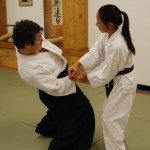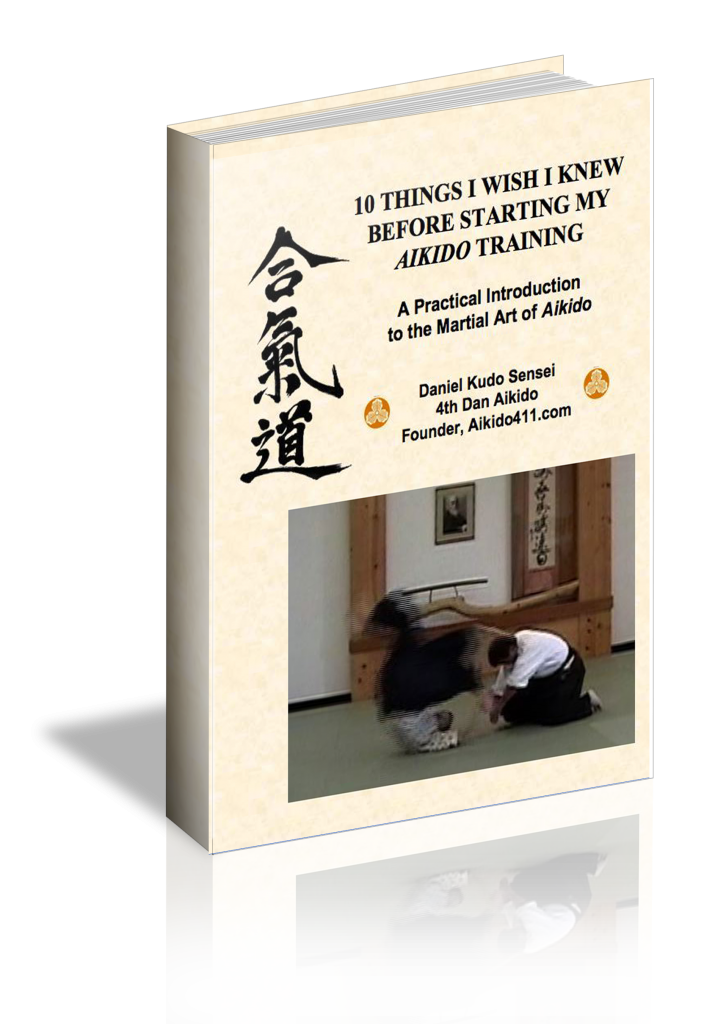Aikido Techniques: Women, Are They the Same as Men?

Aikido Techniques: Children's Aikido (5)
If you are interested in learning about Aikido techniques and women, then this article will provide a measure of insight. The physical differences between men and women are obvious. Men posses a much greater degree of upper body strength, as well as a greater percentage of muscle mass per unit weight. When given a physical problem, men will more readily try to physically “force the issue” than women. Being more testosterone-driven, men tend to have much more intense aggressive tendencies than women who score higher in the nurturing category. Thus on a force-on-force basis, men will tend to prevail in a physical altercation with a women of approximately the same height. In the following video observe the fluid motion of women practicing Aikido. Movements are circular, smooth and flowing.
Aikido Techniques: Force with Force…Not Force Against Force
The martial art of Aikido can be thought of as a “great leveler” because Aikido techniques seek to blend with the force of an attack rather than to meet it head on. Without this force-on-force conflict, the effects of greater strength, weight, or speed are diminished. The Aikido student seeks to blend with the force, and redirect it to a throw or pin rather than get “caught up in the fur ball” and have the situation degrade into a wrestling match on the floor. It is for this apparent “disadvantage”, the lack of upper body strength, that women often learn the art faster than men.
Aikido Techniques and Women: Back to Basics !!!
Disadvantages to Advantages – Why do women tend to learn Aikido techniques properly, as a general rule, much faster than men? The answer lies in the apparent physical disadvantage, which requires that she must learn to use the body rather than the arms to throw. The four basic principles of Aikido teach us that the power generated comes from the One-Point or Center rather than the upper body. The defensive movements are designed to blend with the attack, and redirect it so that uke (the attacker) is drawn off balance. Once balance is taken then the execution of the Aikido technique is made easier because uke is focused on regaining the balance in an effort to get back his strength.
Sayu undo and sokumen iriminage – In the Aikitaiso exercise called sayu undo, the arms move to one’s side and the body weight drops as a single unit. The Aikido technique called sokumen iriminage uses this movement to drop an opponent. Most males that see this technique demonstrated immediately try to execute a “clothesline” maneuver by banging their arm into their partner’s throat. In reality, uke’s balance is taken first by hyper-extending an arm while “slowing” the upper body which pulls their center of gravity “behind” them. With the balance taken, it is a simple matter of dropping your body in one unit to provide the downward momentum for the throw. Most females understand this concept immediately and avoid the tendency to use excess upper body strength. The following video is a demonstration of kihon waza by Kudo Sensei.
The “weaker sex”? Not! – What appears to be a disadvantage actually promotes the learning of proper Aikido technique. Because they do not rely on upper body strength, women naturally internalize the four basic principles of Aikido. Their technique is powerful because they lack broad shoulders. They rely on proper movement to unbalance the opponent and body movement to complete the throw. Thus women are weaker in upper body, but far stronger in technique.

Thank you for this interesting article and the wonderful video. I can feel the flow of the movements by watching it and I will remember in the aikido training 🙂
Nora
Nora – Thank you for the lovely comment. Women do so well in Aikido because their focus is on proper body movement and, as you can see in the video, these movements are quite graceful.
i am from Estonia and women. when i do exercises then i feel like i dancing. i ´m sorry , my english awful…….
In many respects, Aikido is very similar to dancing when done properly. It is graceful as energies blend.
I don’t think aikido is like dancing, but I do think that the techniques are very similar for men and women.